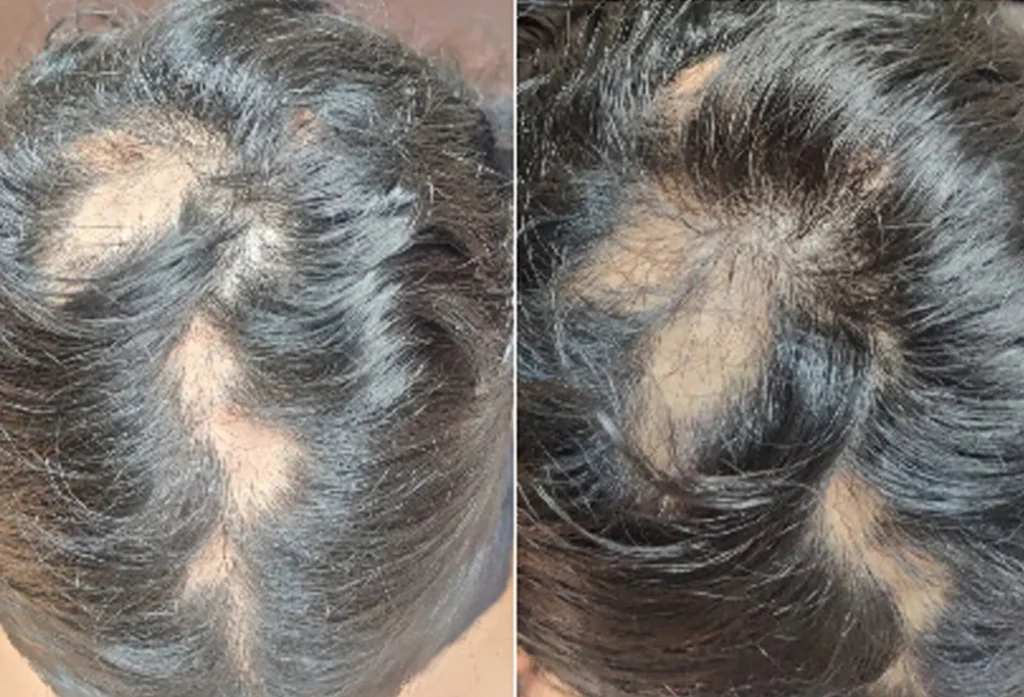People with trichotillomania often experience noticeable hair loss or bald patches. They may also chew or swallow their hair, leading to dental and digestive issues.
Trichotillomania is challenging to treat. Nevertheless, many people recover. It is especially true if treatment is combined with therapy for co-occurring disorders such as substance use disorder.
Cognitive Behavioral Therapy (CBT)
Cognitive Behavioral Therapy, or CBT, is one of the most well-established and effective treatments for trichotillomania. It is mainly because it helps to reduce the many negative symptoms that accompany this condition, such as depression, anxiety, and shame.
The foundation of CBT is the idea that behaviour, emotions, and thoughts are interconnected. Unhealthy thinking and perceptions often cause distress, leading to harmful behaviours such as hair-pulling. This treatment focuses on learning to recognize and identify these thought patterns, learning tools to manage them, and practicing the new skills in a safe and supportive environment.
It is essential to find a therapist experienced with CBT and who has treated trichotillomania before. It is optional for all patients, but it does help to ensure that the therapist is familiar with this condition and how it affects people. It is also helpful if the therapist is willing to play an active role in sessions and encourages patients to do the same outside therapy.
Eye Movement Desensitization and Reprocessing (EMDR)
While the onset of trichotillomania can be pretty traumatic for many people, it can also be overcome. Often, those who have overcome this disorder have done so with the help of trichotillomania therapy and the encouragement of their friends and family.
Some common treatments for trichotillomania include habit reversal training, which involves learning to recognize situations that trigger hair pulling and substituting behaviours like clenching your fists when an urge hits. Other therapies include cognitive therapy, which helps to identify and examine beliefs about hair-pulling that are unhelpful. Other treatments may also address underlying mental health conditions that occur alongside trichotillomania, such as depression and anxiety.
Psychotherapy that works well for treating both PTSD and C-PTSD is called EMDR. During a session, you focus on the memory being treated while engaging in bilateral eye movements or rhythmic movements, such as tapping, as directed by your therapist. It allows your brain’s left and right sides to process the traumatic memory into a simple memory.
Hypnotherapy
Trichotillomania is a condition that causes compulsive hair-pulling behaviour. The symptoms can vary, but people often pull their hair from their scalp, eyelashes, and eyebrows. It typically begins in early adolescence. It may result in humiliation and guilt sentiments that lower one’s self-worth.
Hypnotherapy is a technique that uses guided imagery and positive affirmations to induce a deep state of relaxation. In this altered state of consciousness, the subconscious mind is more open to new associations. Using hypnosis, a professional can help break the old patterns and replace them with new, healthy habits.
Studies have shown that natural recovery rates for trichotillomania are higher than previously thought. People who recover from the disorder often experience a reduction in their symptoms. Furthermore, compared to individuals who are still having trichotillomania, those who experience spontaneous recovery are less likely to have a co-occurring mental health issue. These results show that therapy is an important treatment option for those affected by trichotillomania.
Family Therapy
In family therapy, therapists help families understand each other and work through complicated feelings in a safe space. This type of therapy is beneficial for individuals who have co-occurring disorders, such as drug or alcohol addiction and trichotillomania. By addressing both disorders in treatment, lasting recovery can begin.
Trichotillomania is a complex disorder that affects people in many different ways. It can cause distress, social dysfunction, and impairments. However, several treatments can help manage symptoms of trichotillomania, such as habit reversal training and hypnotherapy.
Natural recovery has not been formally defined in the trichotillomania field, but some individuals who have successfully managed their hair pulling can stop without professional treatment. These individuals can implement stimulus control techniques, dietary changes, scalp massages, and natural hair growth products. By sharing their stories, these individuals can inspire others and encourage hope in the trichotillomania community.

